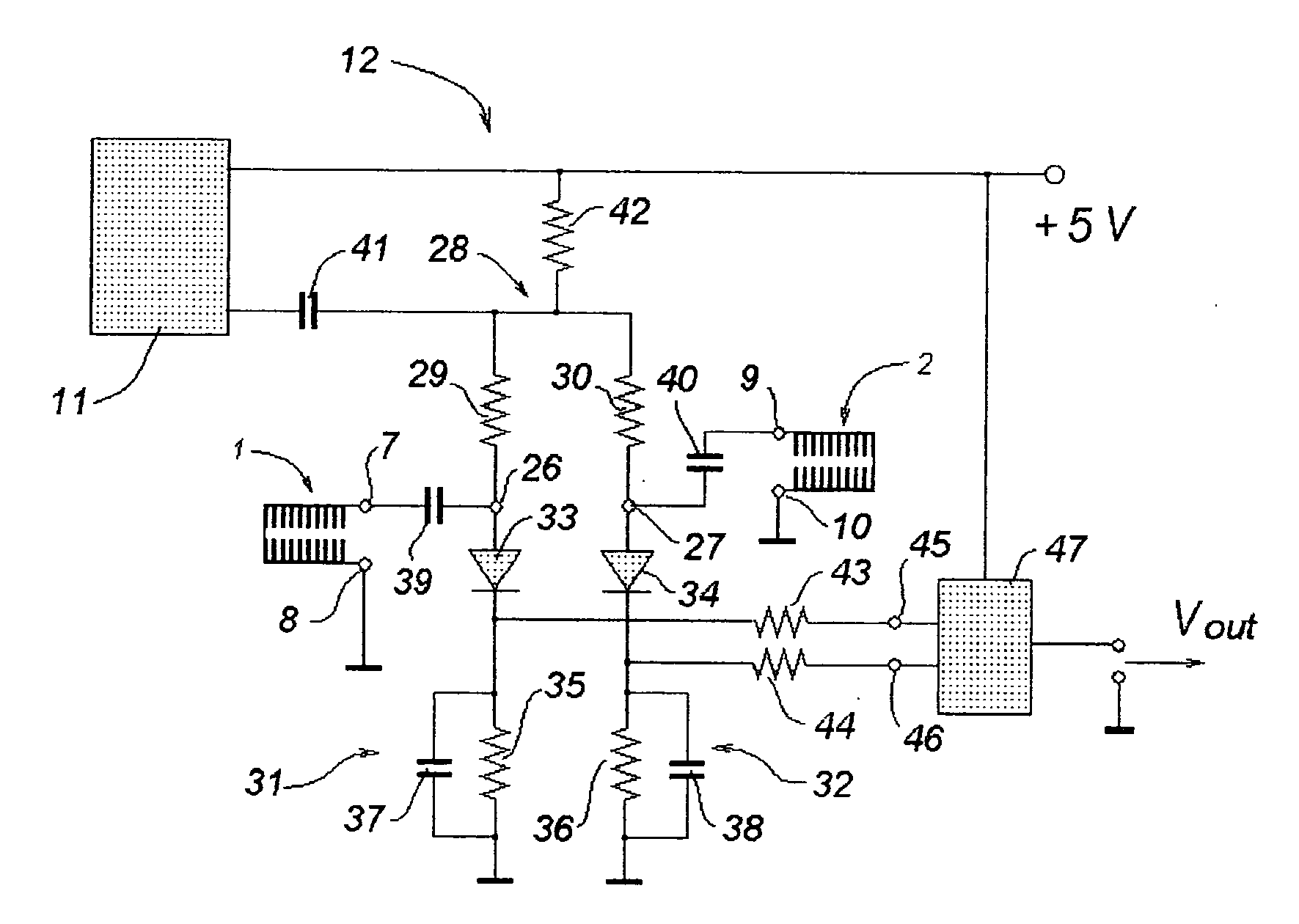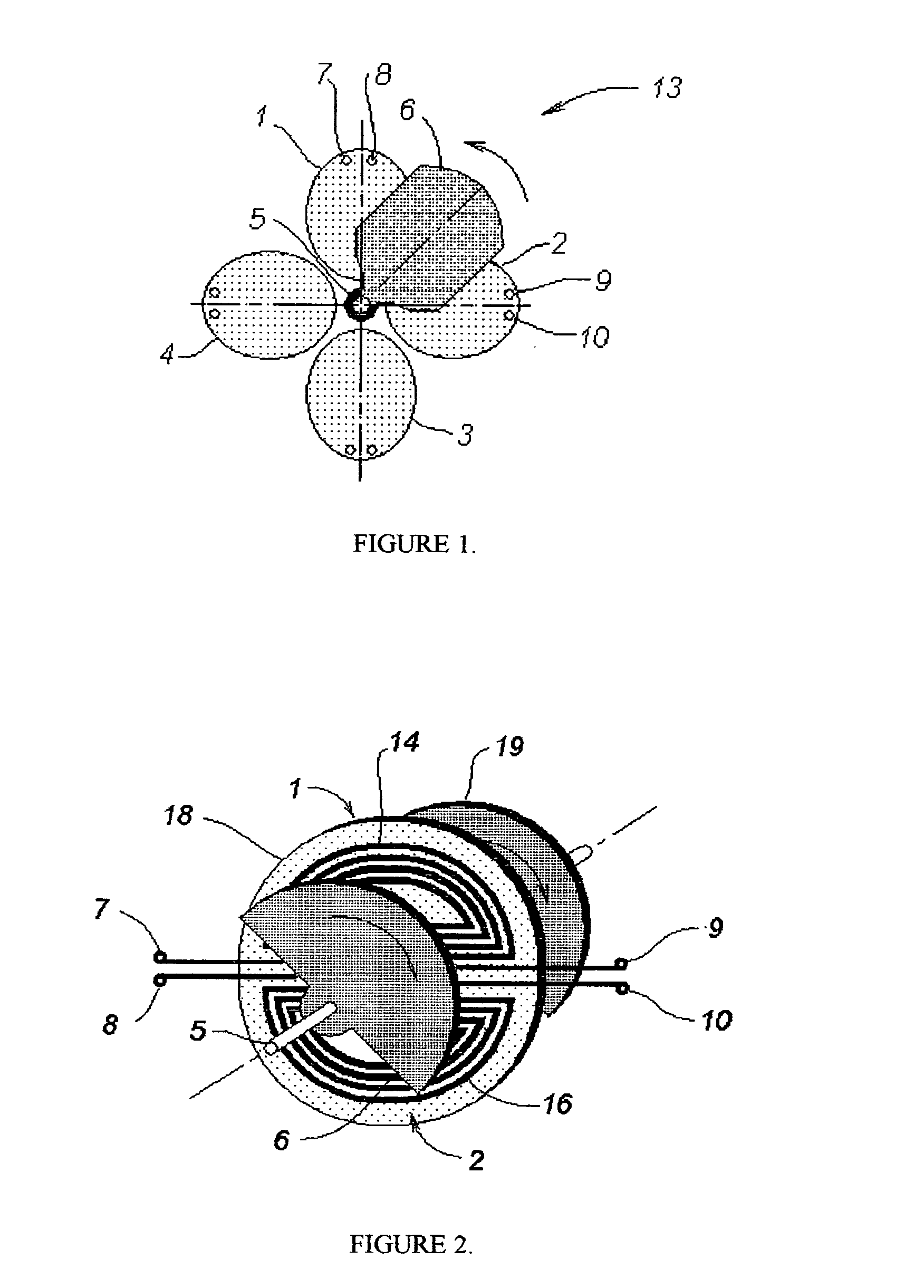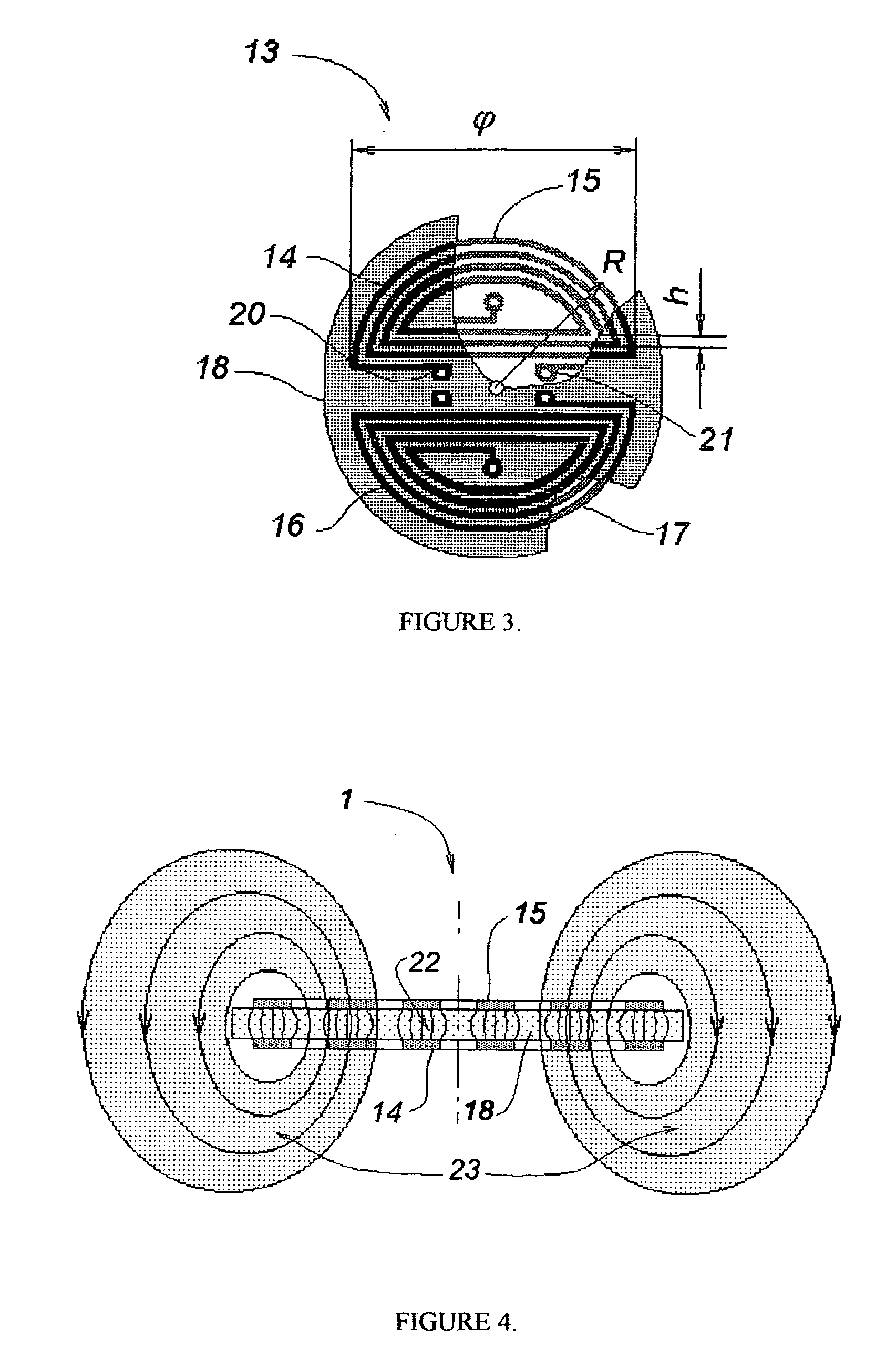Electromagnetic apparatus for measuring angular position
a technology of angular position and electric field, applied in the direction of resistance/reactance/impedence, devices using electric/magnetic means, instruments, etc., can solve the problems of phase delay or a change in resonant frequency, and achieve the effect of increasing sensitivity, increasing sensitivity, and increasing sensitivity
- Summary
- Abstract
- Description
- Claims
- Application Information
AI Technical Summary
Benefits of technology
Problems solved by technology
Method used
Image
Examples
Embodiment Construction
[0026]A general schematic of the present invention is shown in FIG. 1. Here, resonators 1, 2, 3, and 4 are placed in one plane (parallel to the rotation plane) perpendicular to a rotation axis, rotating rod 5. The number of resonators should exceed one. Electrodynamic target 6 connected to rotating rod 5 is installed in a rotation plane, having the capability of beng rotated, and positioned parallel to the plane of the resonators. Its configuration is non-symmetrical with respect to the rotation axis. In all versions of the present invention, electrodynamic target 6 or an additional target positioned on the other side of resonators 1, 2, 3, and 4, should exhibit good electrical conductivity. It can be a metal plate or metallization on a dielectric plate, for example. Terminals of all resonators, e.g. terminals 7 and 8 of resonator 1 and terminals 9 and 10 of resonator 2, are connected to RF oscillator 11 and measuring circuit 12, shown later. All resonators mentioned above are forme...
PUM
 Login to View More
Login to View More Abstract
Description
Claims
Application Information
 Login to View More
Login to View More - R&D
- Intellectual Property
- Life Sciences
- Materials
- Tech Scout
- Unparalleled Data Quality
- Higher Quality Content
- 60% Fewer Hallucinations
Browse by: Latest US Patents, China's latest patents, Technical Efficacy Thesaurus, Application Domain, Technology Topic, Popular Technical Reports.
© 2025 PatSnap. All rights reserved.Legal|Privacy policy|Modern Slavery Act Transparency Statement|Sitemap|About US| Contact US: help@patsnap.com



